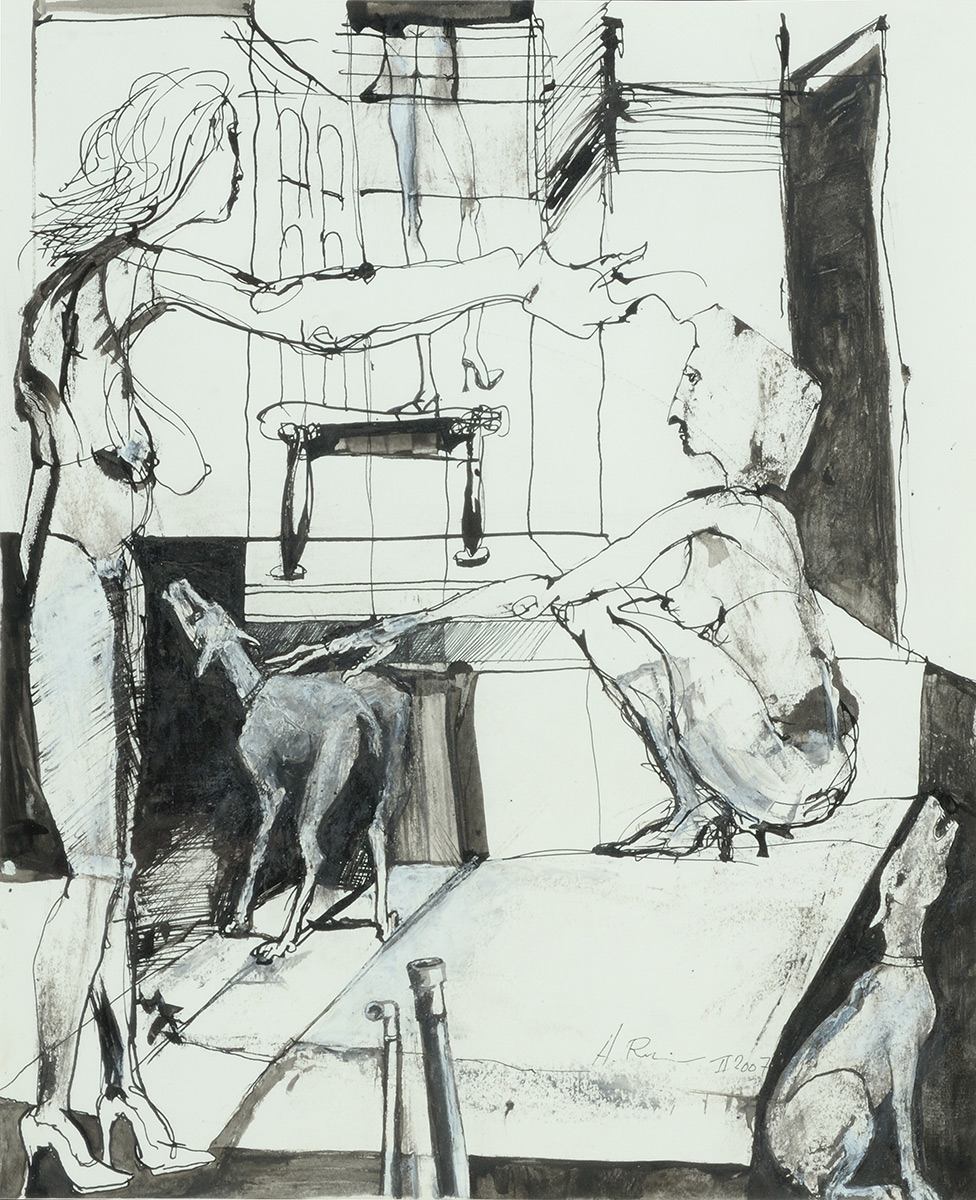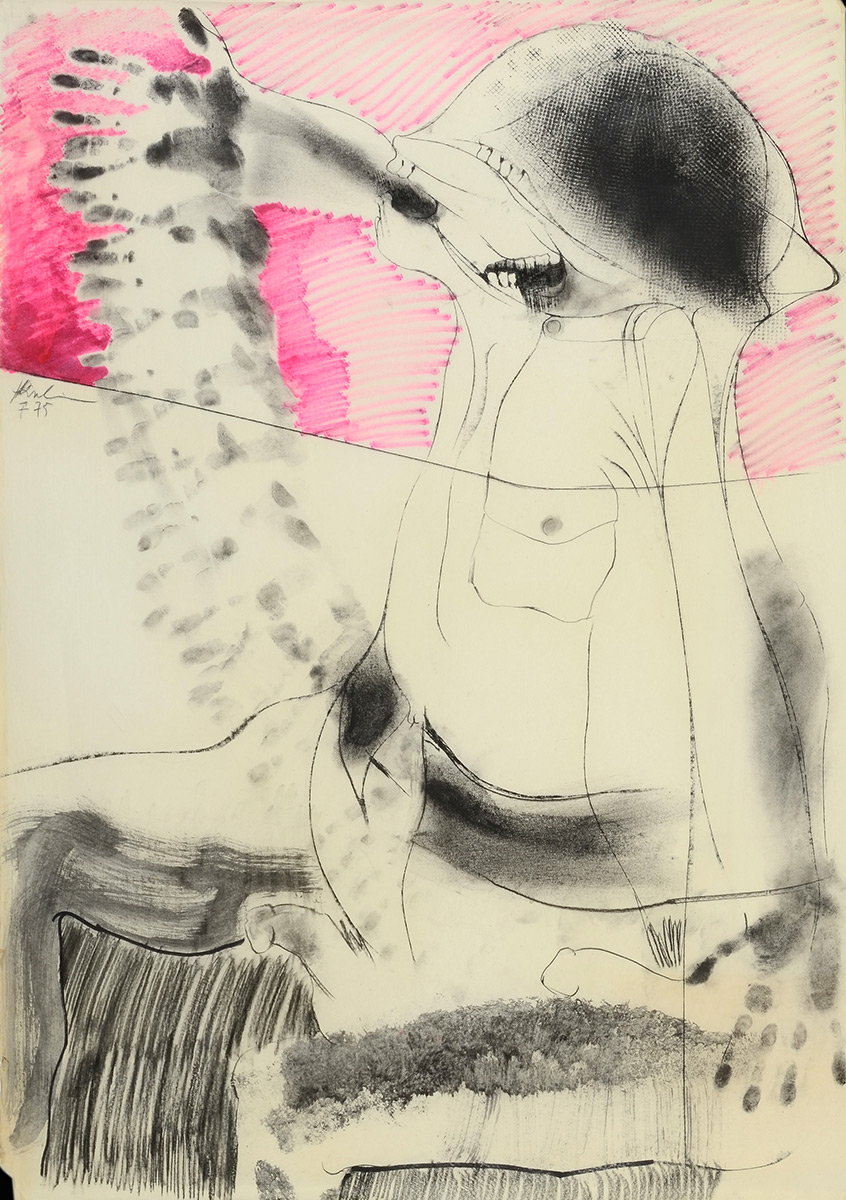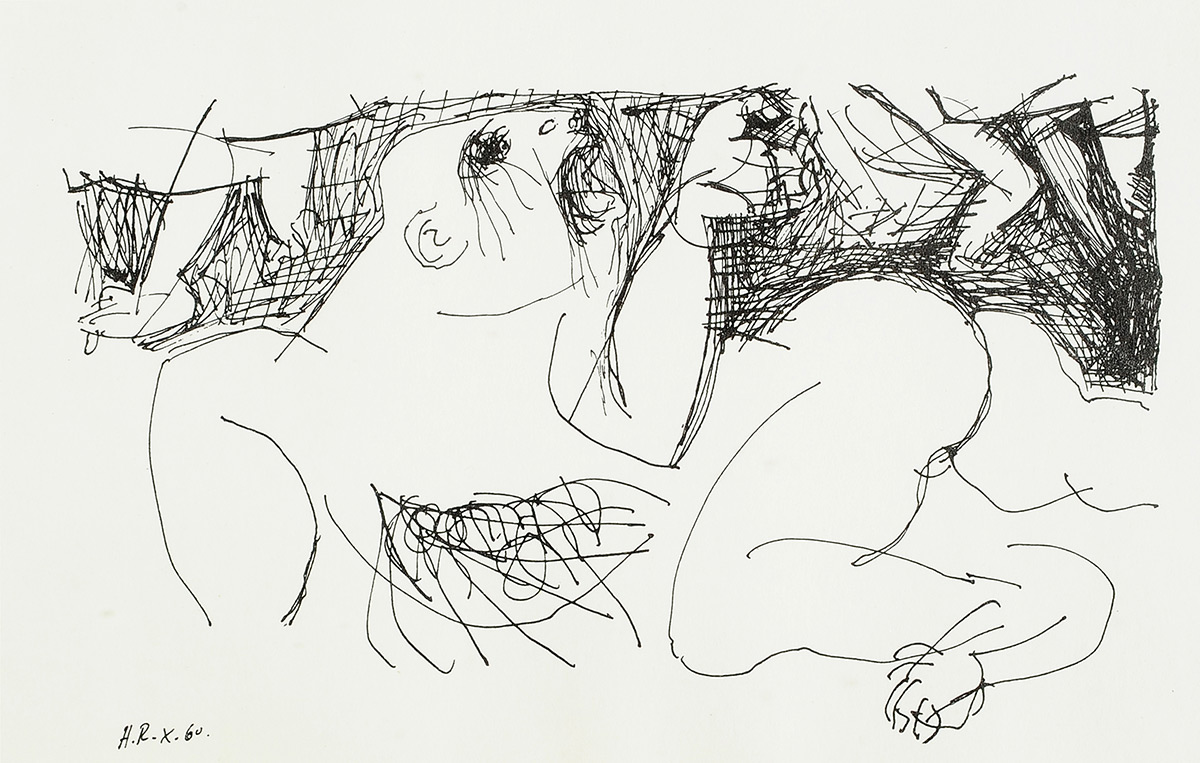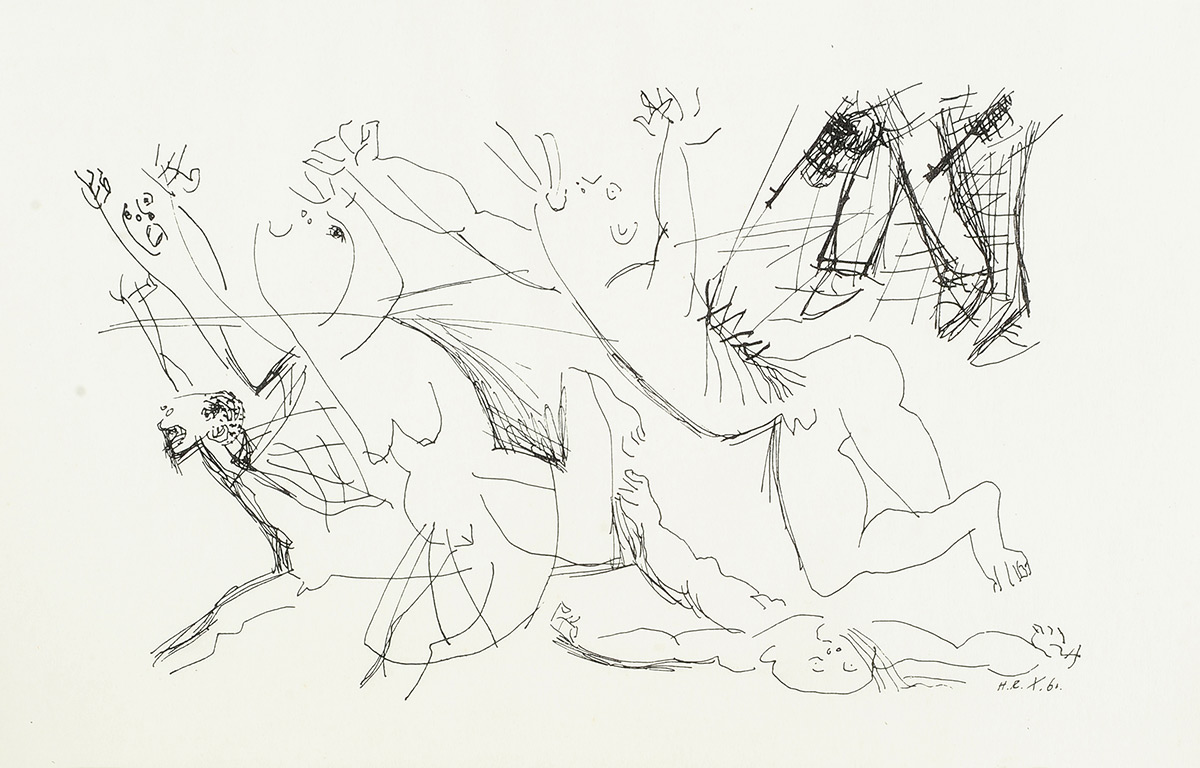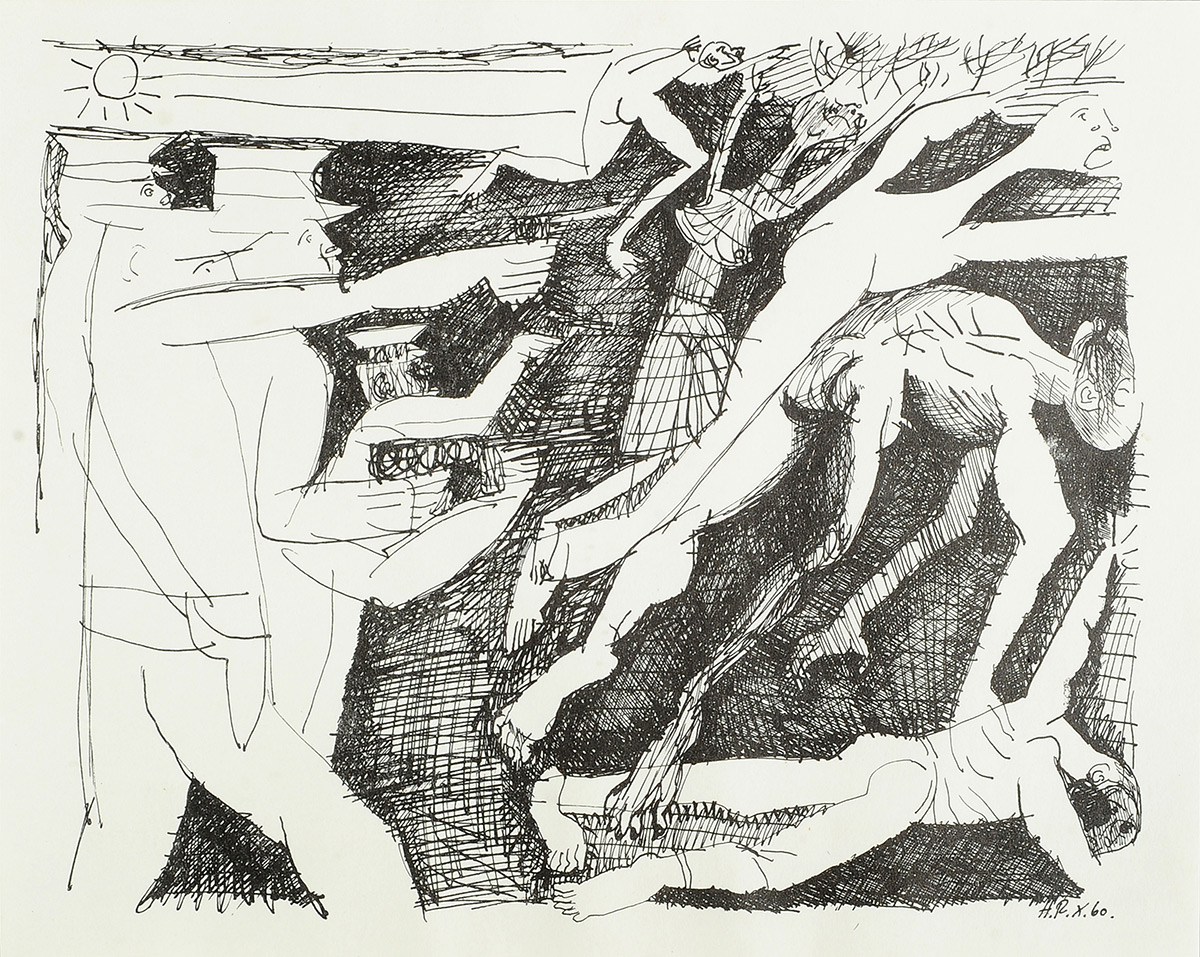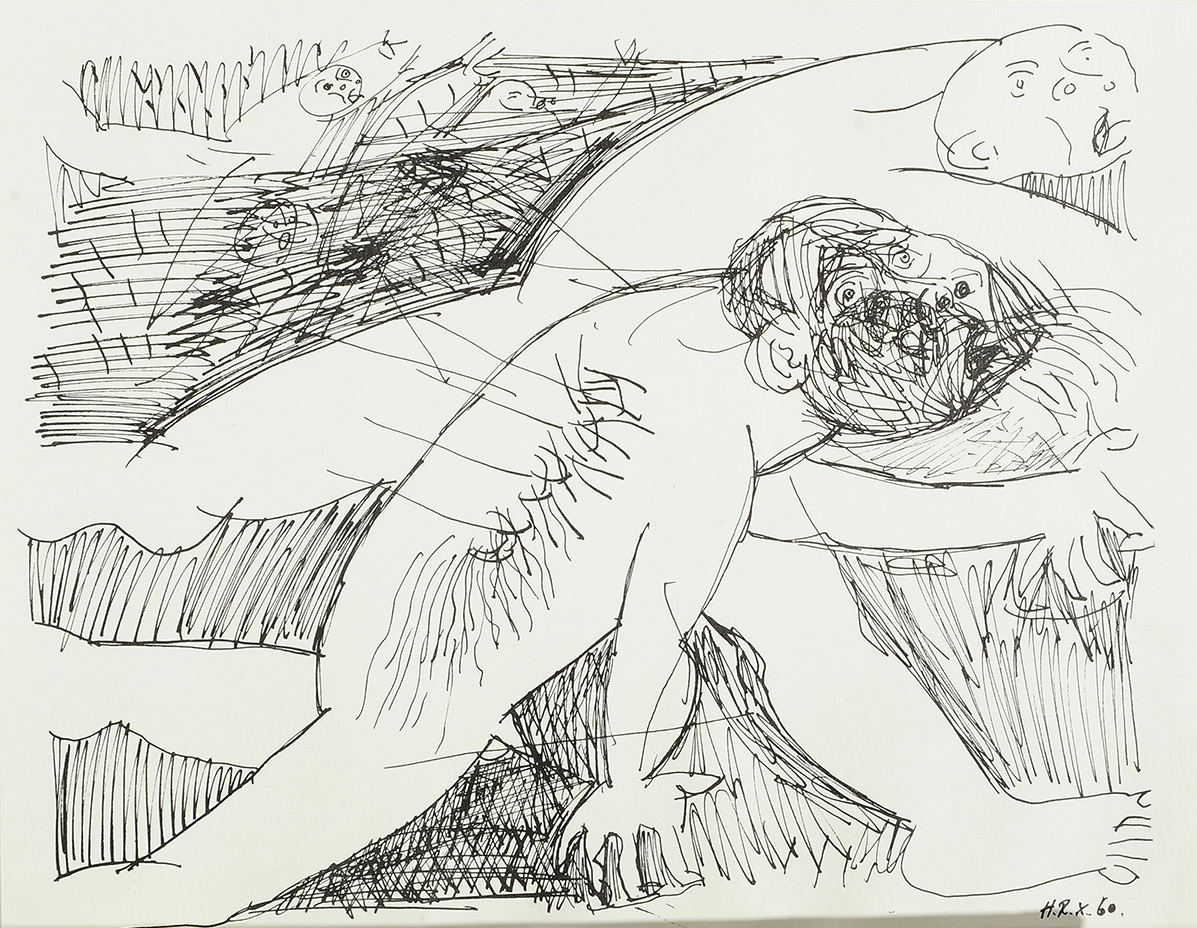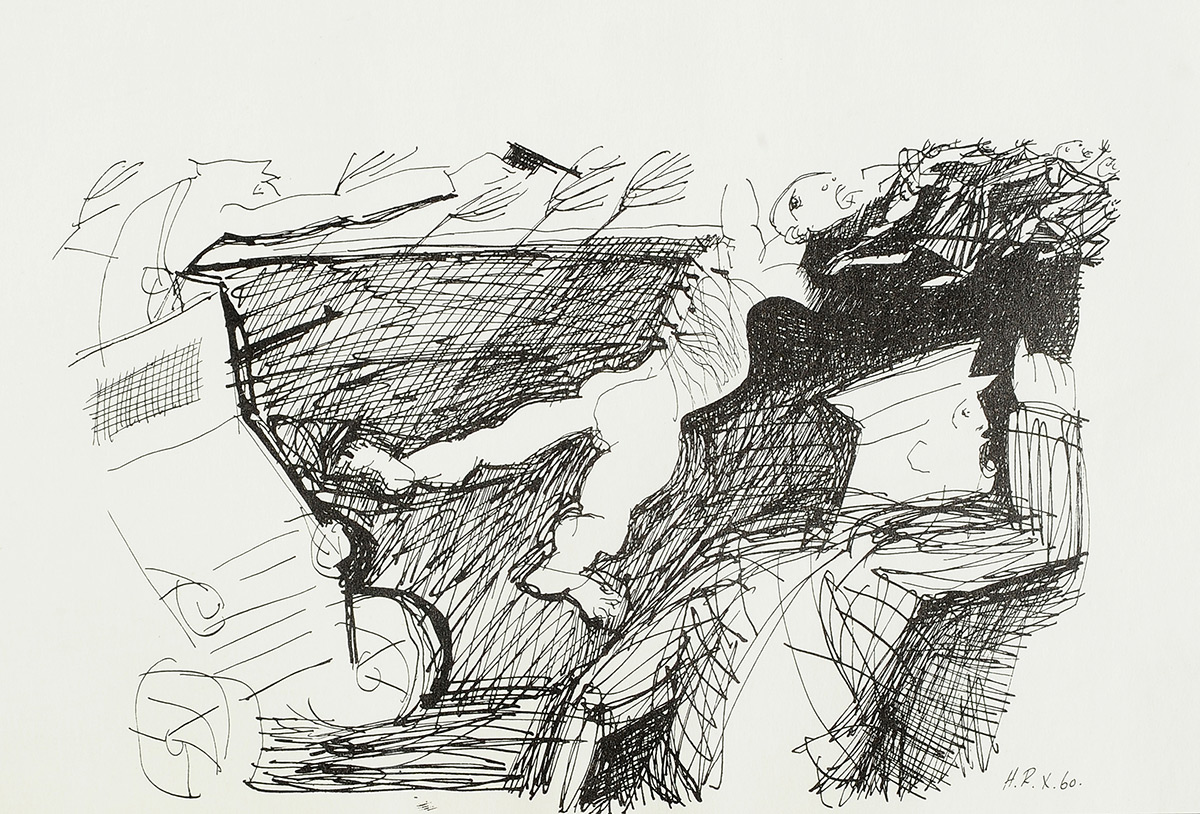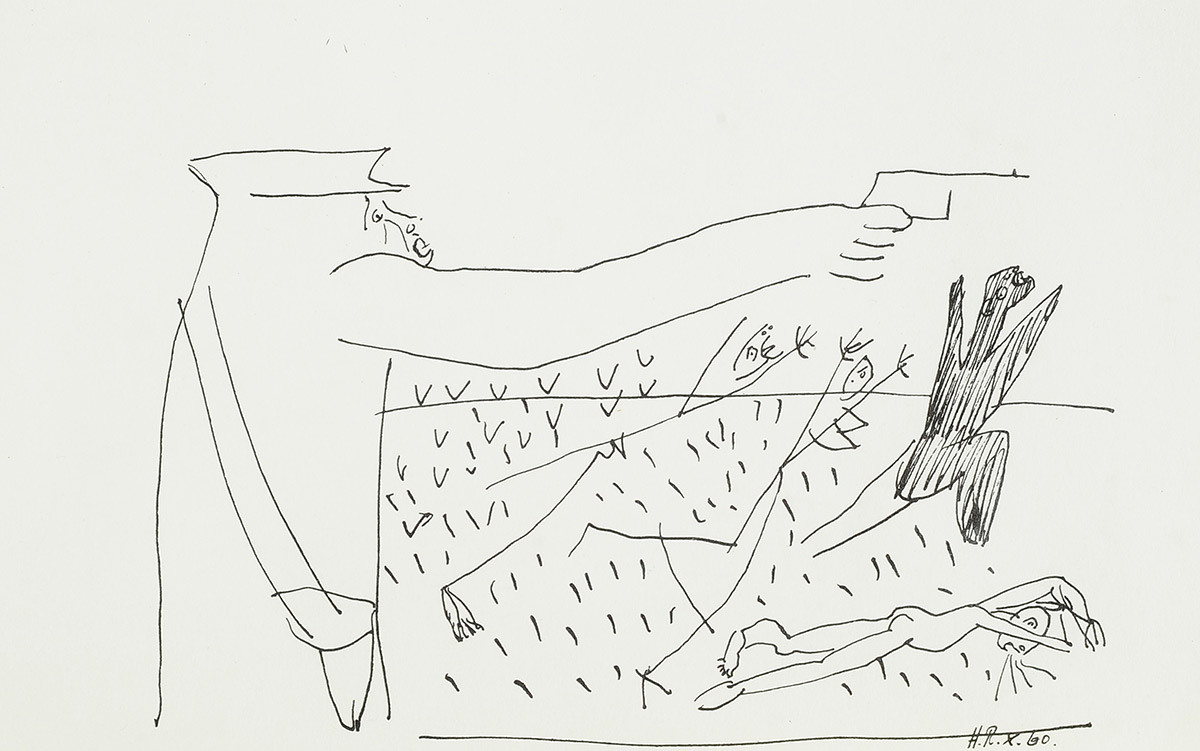Harold RUBIN (b. 1932)
BIOGRAPHY
Harold Rubin was born in Johannesburg. He was educated at Jeppe High School, and studied drawing and painting privately with Roza van Gelderen, Douglas Portway and Herman Wald. At the age of 16, he started studying clarinet with Louis Nicholaeff, who has been a pupil of composition and theory with Rimsky Korsakoff, at the Leningrad Conservatory.
Rubin went on to study Architecture at the University of the Witwatersrand and to further his studies at the Architectural Association in London.
He began writing music in the 1950s, and formed his own quartet. Together, they snuck into Sophiatown and made music with saxophonist Kippie Moeketsi and trombonist Jonas Gwangwa at the Odin Cinema on Sundays.
In 1957, Rubin married Riva Wainer and they had two sons, Adam and Ezra. By this time, Rubin was already an established artist. He held five solo shows between 1956 and 1962. In his artwork, he addressed socio-political issues. In 1961, he published a series of drawings titled ‘Sharpeville’, as a comment on the Sharpeville Massacre, which had taken place the previous year.
His solo exhibition The Beast and the Burden was overshadowed by a court case. In 1962, Rubin had submitted an artwork, called My Jesus, into a competition, which led to a charge of blasphemy by the authorities. He was acquitted following a five-week trial and immigrated to Israel in 1963.
In Israel, Rubin stopped playing music and focused on his work as an artist and architect. He was in charge of a project at Ife University in Nigeria and it was during his travels to Nigeria in 1973 that he met Miriam Kainy. They fell in love and married in 1976, following both of their divorces in 1975.
In 1979, Rubin began playing the clarinet again. He taught life-drawing at the Bezalel Art Academy from 1979 until 1982.
In 1986, he resigned from architecture to devote himself to his art full time, and successfully accomplished his goal to exhibit in the UK, Europe and the USA. While in Israel, he produced a series called the ‘Israeli War’, which features highly stylised modernistic figures in contorted poses, symbolic of the anguish and pain of war.
Rubin exhibited several times at Goodman Gallery in Johannesburg. His 2007 exhibition, Diary Pages, was accompanied by a one-hour documentary, entitled A Magnificent Failure, which tells the story of his life and work.
‘After more than four decades of artistic creation in Israel, the film follows Harold Rubin back to Johannesburg, the wellspring of his art,’ reads the text that accompanied its Goodman Gallery screening. ‘This is where he grew up as a man and artist. […] The film’s director is Rubin’s step-daughter, Yasmine Kainy, an Israeli filmmaker who grew up on his stories of Johannesburg of the early 1960s.’


